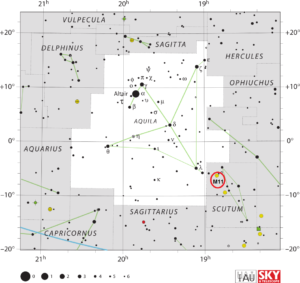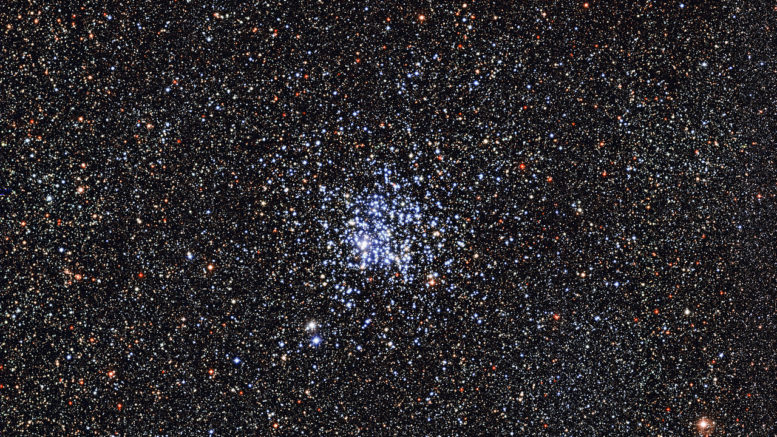Of the 26 open clusters included in the Messier catalog, Messier 11, the Wild Duck Cluster is the most distant that can be seen with the naked eye. The best time to spot the cluster is in August. M11 is one of the most densely populated open clusters known.
| Description | |
| Visible From Pacific Northwest | June, July, August and September |
| Best Time To Observe | August |
| Minimum Size Of Viewing Device | Naked Eye |
| Object Type | Open Cluster |
| Designations | Messier 11, M11, Wild Duck Cluster, NGC 6705, Collinder 391, C 1848-063, Melotte 213 |
| Right Ascension | 18h 51.1m |
| Declination | -06°16′ |
| Constellation | Scutum |
| Number Of Stars | 2900 |
| Apparent magnitude | +6.3 |
| Apparent dimensions | 14′ |
| Object Radius | 25 light years |
| Distance From Earth | 6,200 light years |
History
Messier 11 was discovered by the German astronomer Gottfried Kirch, director of the Berlin Observatory, in 1681.
English astronomer William Derham was the first to resolve the cluster into stars around 1733.
Charles Messier added the cluster to his catalogue on May 30, 1764. Swiss-American astronomer Robert Julius Trumpler would help classify the properties of the cluster of M11.
Locating M11 In The Sky
To star-hop to the M11 Wild Duck Cluster, first of all find Altair, the brightest star in Aquila the Eagle, and the second brightest star in the Summer Triangle. Altair is rather easy to identify, because it’s flanked on each side by the two moderately bright stars, Tarazed and Alshain.

Viewing M11
Messier 11 can be seen without binoculars and appears as a faint patch of light above the southern horizon for observers in the northern hemisphere. The brighter members of the cluster form a V-shaped triangle that could be said to resemble a flock of ducks when observed in a small telescope, which is how M11 got its name.
Photographing M11
Photographing M11 is a great opportunity for new astrophotographers to practice photographing globular clusters before turning to more complex targets. Not only can this be done with a DSLR, but requires precise tracking or else the stars in the cluster will become blurry. Guides say that 2-3 minute photo exposure is recommended.
Sources And Further Reading
Descriptions of all of Messier Objects be found here.
https://www.nasa.gov/feature/goddard/2017/messier-11-the-wild-duck-cluster/
https://www.galactic-hunter.com/post/m11-the-wild-duck-cluster

Be the first to comment on "Messier 11 Wild Duck Cluster"